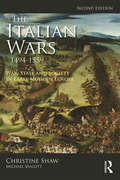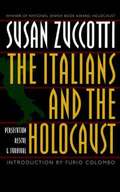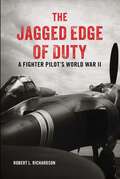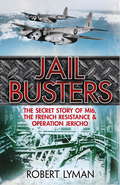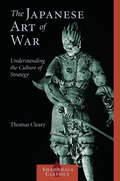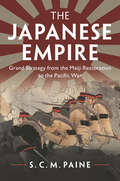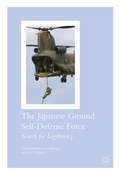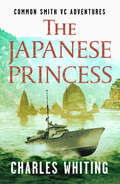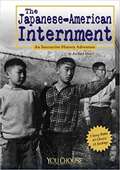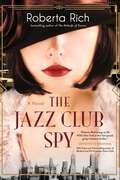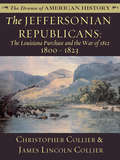- Table View
- List View
The Italian Wars 1494-1559: War, State and Society in Early Modern Europe (Modern Wars In Perspective)
by Christine Shaw Michael MallettThe Italian Wars 1494–1559 outlines the major impact that these wars had, not just on the history of Italy, but on the history of Europe as a whole. It provides the first detailed account of the entire course of the wars, covering all the campaigns and placing the military conflicts in their political, diplomatic, social and economic contexts. Throughout the book, new developments in military tactics, the composition of armies, the balance between infantry and cavalry, and the use of firearms are described and analysed. How Italians of all sectors of society reacted to the wars and the inevitable political and social change that they brought about is also examined, offering a view of the wars from a variety of perspectives. Fully updated and containing a range of maps as well as a brand-new chapter on propaganda and images of war, this second edition of The Italian Wars 1494–1559 is essential reading for all students of Renaissance and military history.
The Italian Wife: a breath-taking and heartbreaking pre-WWII romance set in Italy
by Kate FurnivallTHE SUNDAY TIMES TOP TEN BESTSELLING AUTHOR'Wonderful . . . hugely ambitious and atmospheric' KATE MOSSE'Superb storytelling' DINAH JEFFERIESDiscover a brilliant story of intrigue, romance and betrayal in 1930s Italy, from the internationally bestselling author . . . .Italy, 1932 - Mussolini's Italy is growing from strength to strength, but at what cost?One bright autumn morning, architect Isabella Berotti sits at a café in the vibrant centre of Bellina, when a woman she's never met asks her to watch her ten-year-old daughter, just for a moment. Reluctantly, Isabella agrees - and then watches in horror as the woman climbs to the top of the town's clock tower and steps over the edge.This tragic encounter draws vivid memories to the surface, forcing Isabella to probe deeper into the secrets of her own past as she tries to protect the young girl from the authorities. Together with charismatic photographer Roberto Falco, Isabella is about to discover that secrets run deeper, and are more dangerous, than either of them could have possibly imagined . . .From the glittering marble piazzas to the picturesque hillside villages and winding streets of Rome, The Italian Wife will take you on an breath-taking journey. Perfect for fans of Dinah Jefferies, Lucinda Riley and Rosanna Ley.PRAISE FOR KATE FURNIVALL:'A thrilling plot ... Fast-paced with a sinister edge' The Times'A thrilling, compelling read. Wonderful!' Lesley Pearse'Gripping . . . poignant, beautifully written ...will capture the reader' The Sun'Truly captivating' Elle'Perfect escapist reading' Marie Claire'An achingly beautiful epic' New Woman'A rollicking good read' Daily Telegraph
The Italian Wife: a breath-taking and heartbreaking pre-WWII romance set in Italy
by Kate Furnivall*** THE Sunday Times TOP TEN BESTSELLING AUTHOR ***'Wonderful . . . hugely ambitious and atmospheric' Kate Mosse'Superb storytelling' Dinah Jefferies Discover a brilliant story of intrigue, romance and betrayal in 1930s Italy, from the internationally bestselling author of The Betrayal.*****Italy, 1932 -- Mussolini's Italy is growing from strength to strength, but at what cost?One bright autumn morning, architect Isabella Berotti sits at a café in the vibrant centre of Bellina, when a woman she's never met asks her to watch her ten-year-old daughter, just for a moment. Reluctantly, Isabella agrees -- and then watches in horror as the woman climbs to the top of the town's clock tower and steps over the edge.This tragic encounter draws vivid memories to the surface, forcing Isabella to probe deeper into the secrets of her own past as she tries to protect the young girl from the authorities. Together with charismatic photographer Roberto Falco, Isabella is about to discover that secrets run deeper, and are more dangerous, than either of them could have possibly imagined . . .From the glittering marble piazzas to the picturesque hillside villages and winding streets of Rome, The Italian Wife will take you on an breathtaking journey. Perfect for fans of Dinah Jefferies, Lucinda Riley and Rosanna Ley. Further praise for Kate Furnivall:'A thrilling plot ... Fast-paced with a sinister edge' Times'A thrilling, compelling read. Wonderful!' Lesley Pearse'Gripping . . . poignant, beautifully written ...will capture the reader to the last' Sun'Truly captivating' Elle'Perfect escapist reading' Marie Claire'An achingly beautiful epic' New Woman'A rollicking good read' Daily Telegraph
The Italians and the Holocaust: Persecution, Rescue, and Survival
by Susan ZuccottiEighty-five percent of Italy's Jews survived World War II. <P><P>Nevertheless, more than six thousand Italian Jews were destroyed in the Holocaust and the lives of countless others were marked by terror. <P><P>For Zuccotti, the Holocaust in Italy began when the first "black-shirted thug" poured a bottle of castor oil down the throat of his victim, or when the dignity of a single human being was violated. <P><P>Susan Zuccotti relates hundreds of stories showing the resourcefulness of the Jews, the bravery of those who helped them, and the inhumanity and indifference of others.
The Jacobite Rising of 1715 and the Murray Family: Brothers in Arms
by Rosalind AndersonA look at one of the most influential aristocratic families in Scottish history and their role in eighteenth-century politics.Based in Perthshire, the Murray family played an important role in all Jacobite rebellions, whether as rebels or supporters of the government. During the Great Rising of 1715, the head of the family, the Duke of Atholl, remained loyal to the Hanoverian government, but three of his sons were Jacobites. Two of these brothers then went on to play major roles in the 1719 Rising and in the more famous 1745.What led to their decision to commit to the Jacobite cause? A look at the earlier years of the Murrays at the end of the seventeenth and early eighteenth centuries sheds light on the family dynamics and helps explain how and why the brothers made the decisions they did. Traditionally the Murrays were thought to have perhaps made a conscious and pragmatic decision to have a foot in both camps, but the evidence presented here shows the brothers possessed a strong rebellious streak. Despite the heavily enforced regime of duty from their father and the Presbyterian piety of their mother, they refused to conform to their parents’ wishes and in varying degrees chose of their own volition, a different path to that expected of them.Set against the backdrop of social unrest and anxiety over against English influence in Scotland, these choices had a significant impact on the history of the family and, because of who that family was, a significant impact on the country.
The Jagged Edge of Duty: A Fighter Pilot's World War II
by Robert L. RichardsonThe World War II fighter-pilot storyOn the very first day of the invasion of Sicily, three months into his combat career, Allan Knepper flew his P-38 Lightning fighter in a squadron sent out to sweep the island and interdict German ground targets. Retreating German infantry unexpectedly pounded the American flyers. Knepper was one of two shot down; he was never found. Knepper&’s story is the story-in-microcosm of thousands of American fighter pilots in World War II. Richardson recounts Knepper&’s experiences from training through combat and uses them to discuss the aircraft, tactics and doctrine, training, base life, and aerial combat of the war. This is the intimate account of one pilot at war, but also the anatomy of the fighter-pilot experience in World War II.
The Jaguar Hunter (Gateway Essentials #400)
by Lucius ShepardFourteen stories - including "Radiant Green Star", winner of the 2001 Locus Award for Best Novella - make up this classic collection. Leading off the book is the Nebula Award-winning title story, in which a poor Honduran hunter is coerced into tracking the forbidden "Black Jaguar of Barrio Carolina." Futuristic war, menacing wind spirits, parallel worlds, a six-thousand-foot dragon: this collection proves that Shepard is neither genre fantasist not strict realist, but one of the most intriguing writers we have today.
The Jail Busters: The Secret Story of MI6, the French Resistance and Operation Jericho
by Robert LymanIn the new year of 1944 the French Resistance in northern France was on its knees. Relentless attacks on its diverse and disorganised networks by the Gestapo and the Abwehr had put many of its best operatives in prison, or worse. But in the lead up to Operation Overlord, 'D Day', the Resistance had never been more important to the Allied war effort, and many groups were in the pay of Britain's Secret Intelligence Service, MI6. One such was organised by a patriot called Dominic Ponchardier. For months he had watched helplessly as his friends and colleagues had been swept up by the Nazi drag net, and cast into the old prison on the eastern outskirts of Amiens. In desperation he asked his MI6 handlers for help, and once London agreed it led to one of the most daring missions of the war. On the morning of 18 February 1944, nineteen Mosquito bombers flew at low level across the channel, skimming just above the ground to drop their bombs on sections of the walls of Amiens Prison. Hundreds escaped, scores of whom evaded recapture to continue the fight against Nazi repression. It was an epic of precision bombing, in which one of the most notable RAF heroes of the war, Group Captain Charles Pickard, lost his life. Robert Lyman's book reveals, from previously unseen sources, the full truth of MI6's involvement in the French Resistance, and narrates in vivid detail a stirring tale of courage and skill.
The Jail Busters: The Secret Story of MI6, the French Resistance and Operation Jericho
by Robert LymanIn the new year of 1944 the French Resistance in northern France was on its knees. Relentless attacks on its diverse and disorganised networks by the Gestapo and the Abwehr had put many of its best operatives in prison, or worse. But in the lead up to Operation Overlord, 'D Day', the Resistance had never been more important to the Allied war effort, and many groups were in the pay of Britain's Secret Intelligence Service, MI6. One such was organised by a patriot called Dominic Ponchardier. For months he had watched helplessly as his friends and colleagues had been swept up by the Nazi drag net, and cast into the old prison on the eastern outskirts of Amiens. In desperation he asked his MI6 handlers for help, and once London agreed it led to one of the most daring missions of the war. On the morning of 18 February 1944, nineteen Mosquito bombers flew at low level across the channel, skimming just above the ground to drop their bombs on sections of the walls of Amiens Prison. Hundreds escaped, scores of whom evaded recapture to continue the fight against Nazi repression. It was an epic of precision bombing, in which one of the most notable RAF heroes of the war, Group Captain Charles Pickard, lost his life. Robert Lyman's book reveals, from previously unseen sources, the full truth of MI6's involvement in the French Resistance, and narrates in vivid detail a stirring tale of courage and skill.(P) 2014 WF Howes Ltd
The Jake Grafton Collection: The Intruders, The Minotaur, Under Siege, and The Red Horseman (Jake Grafton)
by Stephen CoontsThe hero of the New York Times–bestselling Flight of the Intruder is back in action—&“Stephen Coonts, like Jake Grafton, just keeps getting better&” (Tom Clancy). Navy pilot Jake Grafton took the fight to the enemy in the Vietnam War, winning the Congressional Medal of Honor and becoming a legend in the military community. But now he must navigate life both in the cockpit and in the halls of power as he finds himself on the front lines of a new kind of war . . . The Intruders: In this sequel to Flight of the Intruder, Grafton is stationed in the South Pacific on the USS Columbia, where his new mission is to educate an unruly group of Marines in the art of flying from an aircraft carrier. They better be fast learners, because they&’ll have to work together to survive against an enemy unlike any they&’ve ever faced. &“In the realm of today&’s military fiction, Mr. Coonts&’s The Intruders is as good as they come.&” —The Dallas Morning News The Minotaur: Grafton is heading up a top-secret stealth bomber program at the Pentagon when a series of mysterious deaths occurs, leading him on a manhunt within the US government for a Soviet mole code-named the &“Minotaur.&” If he can&’t find the traitor, Grafton could lose far more than just his career . . . &“Wildly inventive.&” —Ocala Star-Banner Under Siege: In this New York Times bestseller, when a vicious drug lord is captured and brought to Washington, DC, for trial, his fanatically loyal private army prepares to launch an attack on the United States—and its president. The only man who can stop the bloodshed and take down the assassins is Jake Grafton. &“Will keep you glued to your seat on a roller-coaster ride of adventure.&” —USA Today The Red Horseman: As the USSR falls, newly appointed intelligence chief Jake Grafton knows that even as one threat falls, several more are waiting to get their hands on the former Soviet nuclear arsenal. And as he tries to stop a possible Armageddon, someone who is supposed to be on Grafton&’s side is working to make sure he fails. &“Quick-firing excitement, plot, and action . . . Coonts at his best.&” —The Dallas Morning News
The Japan/America Film Wars: World War II Propaganda and its Cultural Contexts (Routledge Library Editions: WW2 #15)
by Abé Mark Nornes and Fukushima YukioWith contributions from noted critics and film historians from both countries, this book, first published in 1994, examines some of the most innovative and disturbing propaganda ever created. It analyses the conflicting images of these films and their effectiveness in defining public perception of the enemy. It also offers pointed commentary on the power of visual imagery to enhance racial tensions and enforce both positive and negative stereotypes of the Other.
The Japanese Art of War: Understanding the Culture of Strategy
by Thomas ClearyMilitary rule and the martial tradition of the samurai dominated Japanese culture for more than eight hundred years. According to Thomas Cleary--translator of more than thirty-five classics of Asian philosophy--the Japanese people have been so steeped in the way of the warrior that some of the manners and mentality of this outlook remain embedded in their individual and collective consciousness. Cleary shows how well-known attributes such as the reserve and mystery of formal Japanese behavior are deeply rooted in the ancient strategies of the traditional arts of war. Citing original Japanese sources that are popular among Japanese readers today, he reveals the hidden forces behind Japanese attitudes and conduct in political, business, social, and personal life.
The Japanese Empire
by Paine S. C. M.The Japanese experience of war from the late-nineteenth to the mid-twentieth century presents a stunning example of the meteoric rise and shattering fall of a great power. As Japan modernized and became the one non-European great power, its leaders concluded that an empire on the Asian mainland required the containment of Russia. Japan won the First Sino-Japanese War (1894-5) and the Russo-Japanese War (1904-5) but became overextended in the Second Sino-Japanese War (1931-45), which escalated, with profound consequences, into World War II. A combination of incomplete institution building, an increasingly lethal international environment, a skewed balance between civil and military authority, and a misunderstanding of geopolitics explains these divergent outcomes. This analytical survey examines themes including the development of Japanese institutions, diversity of opinion within the government, domestic politics, Japanese foreign policy and China's anti-Japanese responses. It is an essential guide for those interested in history, politics and international relations.
The Japanese Ground Self-Defense Force
by Paul Midford Robert D. EldridgeBased on extensive Japanese-language materials, this book is the first to examine the development of Japan's Ground Self-Defense Force. It addresses: how the GSDF was able to emerge as the post-war successor of the Imperial Japanese Army despite Japan's anti-militarist constitution; how the GSDF, despite the public skepticism and even hostility that greeted its creation, built domestic and international legitimacy; and how the GSDF has responded to changes in international and domestic environments. This path-breaking study of the world's third-largest-economic power's ground army is timely for two reasons. First, the resurgence of tensions in Northeast Asia over territorial disputes, and the emphasis recent Japanese governments have placed on using the GSDF for defending Japan's outlying islands is driving media coverage and specialist interest in the GSDF. Second, the March 11, 2011 Great East Japan Earthquake and Tsunami has focused global attention on the GSDF as Japan's lead disaster relief organization. This highly informative and thoroughly researched book provides insight for policy makers and academics interested in Japanese foreign and defense policies.
The Japanese Internment Camps: A History Perspectives Book (Perspectives Library)
by Rachel A. BaileyThis book relays the factual details of the Japanese internment camps in the United States during World War II. The narrative provides multiple accounts of the event, and readers learn details through the point of view of a child at an internment camp, a Japanese-American soldier, and a worker at the Manzanar War Relocation Center. The text offers opportunities to compare and contrast various perspectives in the text while gathering and analyzing information about a historical event.
The Japanese Princess (Common Smith VC Adventures)
by Charles WhitingA kidnapped princess sends Common Smith racing to the land of the rising sunChina, 1927. Communists and Nationalists are fighting each other, and bandits and warlords plague the country. Imperial Japan is eager to provoke a war, and when Princess Sadie, a member of the Japanese royal family, is kidnapped, her life is at stake. For if she dies, the Japanese will have the excuse they need to invade.The mission of Common Smith VC and the redoubtable crew of the Swordfish is to rescue Princess Sadie and avert calamity. It is a race against time - if they don't succeed, the results could be devastating...The sixth Common Smith VC adventure, where both tensions and the stakes couldn't be higher. Perfect for fans of Max Hennessy and David Beaty.
The Japanese Submarine Force and World War II
by Akihiko Yoshida Yoshida Carl BoydWhen first published in 1995, this book was hailed as an absolutely indispensable contribution to the history of the Pacific War. Drawing heavily from Japanese sources and American wartime intercepts of secret Japanese radio messages, a noted American naval historian and a Japanese mariner painstakingly recorded and evaluated a diverse array of material about Japan's submarines in World War II.The study begins with the development of the first Japanese 103-ton Holland-type submergible craft in 1905 and continues through the 1945 surrender of the largest submarine in the world at the time, the 5300-ton I-400 class that carried three airplanes. Submarine weapons, equipment, personnel, and shore support systems are discussed first in the context of Japanese naval preparations for war and later during the war. Both successes and missed opportunities are analyzed in operations ranging from the California coast through the Pacific and Indian Oceans to the coast of German-occupied France. Appendixes include lists of Japanese submarine losses and the biographies of key Japanese submarine officers. Rare illustrations and specifically commissioned operational maps enhance the text.
The Japanese and the War: Expectation, Perception, and the Shaping of Memory (Asia Perspectives: History, Society, and Culture)
by Michael LuckenMemories of World War II exert a powerful influence over Japan's culture and society. In The Japanese and the War, Michael Lucken details how World War II manifested in the literature, art, film, funerary practices, and education reform of the time. Concentrating on the years immediately before and after (1937 to 1952), Lucken explores the creation of an idea of Japanese identity that still resonates in everything from soap operas to the response to the Fukushima nuclear disaster.Lucken defines three distinct layers of Japan's memory of World War II: the population's expectations at the beginning, the trauma caused by conflict and defeat, and the politics of memory that arose after Japan lost to the Allied powers. Emphasizing Japanese-language sources, Lucken writes a narrative of the making of Japanese cultural memory that moves away from Western historical modes and perspectives. His approach also paints a new portrait of the U.S. occupation, while still maintaining a cultural focus. Lucken sets out to capture the many ways people engage with war, but particularly the full range of Japan's experiences, which, he argues, the Japanese state has yet to fully confront, leading to a range of tensions at home and abroad.
The Japanese on Trial: Allied War Crimes Operations in the East, 1945-1951
by Philip R. PiccigalloThis comprehensive treatment of post-World War II Allied war crimes trials in the Far East is a significant contribution to a neglected subject. While the Nuremberg and, to a lesser degree, Tokyo tribunals have received considerable attention, this is the first full-length assessment of the entire Far East operation, which involved some 5,700 accused and 2,200 trials. After discussing the Tokyo trial, Piccigallo systematically examines the operations of each Allied nation, documenting procedure and machinery as well as the details of actual trials (including hitherto unpublished photographs) and ending with a statistical summary of cases. This study allows a completely new assessment of the Far East proceedings: with a few exceptions, the trials were carefully and fairly conducted, the efforts of defense counsel and the elaborate review procedures being especially noteworthy. Piccigallo's approach to this emotion-filled subject is straightforward and evenhanded throughout. He concludes with a discussion of the broader implications of such war crimes trials, a matter of interest to the general reader as well as to specialists in history, law, and international affairs.
The Japanese-American Internment: An Interactive History Adventure (Understanding Differences Series)
by Lola M. Schaefer Rachael HanelDescribes the events surrounding the internment of Japanese Americans in relocation centers during World War II. <P><P>The reader's choices reveal the historical details from the perspective of Japanese internees and Caucasians.
The Jazz Club Spy
by Roberta RichA riveting historical thriller about a Jewish cigarette girl in 1930s New York who finds the soldier who burned down her Russian village years earlier only to be swept up in a political conspiracy on the eve of World War II—from the #1 bestselling author of The Midwife of Venice.New York, 1939 Giddy Brodsky knows she&’s lucky to have a job as a cigarette girl at a Manhattan jazz club, but she dreams of opening her own beauty shop and lifting her family out of poverty. The Brodskys have lived cheek to jowl in the Lower East Side tenements since they came to America nineteen years ago, fleeing a deadly pogrom in their Russian village. But they continue to face prejudice, especially with the rise of the fascist organization the American Bund. Yet Giddy is focused on the future—until she recognizes one of the Cossacks who irrevocably changed her life and the past comes flooding back. Determined to get justice, she enlists the help of Carter van der Zalm, a regular at the jazz club who also happens to be the director with the Department of Immigration at Ellis Island. When Carter discloses that the Cossack is an &“undesirable&” and may be of interest to the government, Giddy agrees to moonlight as a spy for him. Not everyone is who they appear to be, and after a shocking betrayal, Giddy finds herself embroiled in a political conspiracy that could bring America into the war in Europe. From the gritty tenements to the glittering jazz clubs of 1930s New York, The Jazz Club Spy is a thrilling historical novel about a brash young woman who must use all her wits to save the ones she loves.
The Jazz Club Spy
by Roberta RichFrom the author of the &“riveting&” (Chicago Tribune) The Midwife of Venice, a fresh and sweeping historical novel following a Jewish woman attempting to bring justice to her family on the eve of World War II.New York City, 1939: At the height of the Great Depression, a time when President Roosevelt is trying to keep America out of World War II, Giddy Brodsky is lucky to have a job as a cigarette girl at a Manhattan jazz club. Nevertheless, she dreams of establishing a cosmetics business and leaving the poverty-stricken Lower East Side tenements behind. She has lived there with her family ever since they fled Russia, forced to emigrate after a group of Cossacks burned down their village, and her memories continue to haunt her. Giddy tries to focus on the future until, during an evening streetcar ride, she thinks she recognizes one of the Cossacks who changed her life forever. Determined to get answers, she enlists the help of Carter van der Zalm, the Chief Commissioner of Immigration at Ellis Island, who is hunting the same man. He suspects the Russian is involved in an assassination plot that will destroy American and Soviet relations, and he enlists Giddy to moonlight as a spy for him. But when she finally tracks down the man they&’re both seeking, she finds herself in the middle of a shocking political conspiracy that changes everything she once held true. In the tradition of Lara Prescott&’s The Secrets We Kept and Kate Quinn&’s The Rose Code, The Jazz Club Spy is a glittering and gritty look at pre-WWII America, and the personal battle one woman wages between justice and forgiveness.
The Jedburghs: The Secret History of the Allied Special Forces, France 1944
by Will IrwinThe first full history of the pioneering Special Forces units of World War II - dropped behind German lines into France to assist with the D-Day landings - told by a former U. S. Special Forces colonel with unique access to surviving veteransThe story of the Special Forces in World War II has never fully been told before. Information about them began to be declassified only in the 1980s. Known as the Jedburghs, these Special Forces were selected from members of the British, American, and Free French armies to be dropped in teams of three deep behind German lines. There, in preparation for D-Day, they carried out what we now know as unconventional warfare: supporting the French Resistance in guerrilla attacks, supply-route disruption, and the harassment and obstruction of German reinforcements. Always, they operated against extraordinary odds. They had to be prepared to survive pitched battles with German troops and Gestapo manhunts for weeks and months while awaiting the arrival of Allied ground forces. They were, in short, heroes. The Jedburghs finally tells their story and offers a new perspective on D-Day itself. Will Irwin has selected seven of the Jedburgh teams and told their stories as gripping personal narratives. He has gathered archival documents, diaries, and correspondence, and interviewed Jed veterans and family members in order to present this portrait of their crucial role - a role recognized by Churchill and Eisenhower - in the struggle to liberate Europe in 1944-45.
The Jeep: Second World War (LandCraft)
by Lance Cole&“The Jeep is as iconic a military vehicle as the Chieftain tank, and this terrific book celebrates it in brilliant style . . . inspiring.&” —Books Monthly The Second World War Jeep was one of the most famous and influential military vehicles of all time, and over 600,000 were produced. It served with all the Allied forces during the war on every front and it has been the inspiration behind the design of light, versatile, rugged military and civilian vehicles ever since. In this, the first volume in Pen & Sword&’s LandCraft series, Lance Cole traces the design, development and manufacturing history of the Jeep and describes its operational role within the Allied armies. A selection of archive photographs showing the Jeep in service in European and Pacific campaigns gives a graphic impression of how adaptable the Jeep was and records the variety of equipment it could carry. The book is an excellent source for the modeler, providing details of available kits, together with specially commissioned color profiles recording how the Jeeps used by different units and armies appeared. Lance Cole&’s introduction to the Jeep is necessary reading and reference for enthusiasts and modelers. &“If you are a modeler looking for guidance and inspiration then this book is a must have. Its pages are packed full of jeep goodness, giving tips and ideas for your build. It is also a great read, or coffee-time browser, if you are a vehicle enthusiast or simply love Willys/Ford jeeps and merely want to stimulate your brain and satisfy your eyes.&” —The OCAD Collection
The Jeffersonian Republicans: 1800 - 1823
by James Lincoln Collier Christopher CollierHistory is dramatic -- and the renowned, award-winning authors Christopher Collier and James Lincoln Collier demonstrate this in a compelling series aimed at young readers. Covering American history from the founding of Jamestown through present day, these volumes explore far beyond the dates and events of a historical chronicle to present a moving illumination of the ideas, opinions, attitudes and tribulations that led to the birth of this great nation. The Jeffersonian Republicans examines various events between 1800 and 1823 that helped to shape the United States. The Louisiana Purchase, the War of 1812, and important Supreme Court decisions are among the discussed events. The text is enhanced with images of art & artifacts, maps, and photographs of historic significance.
